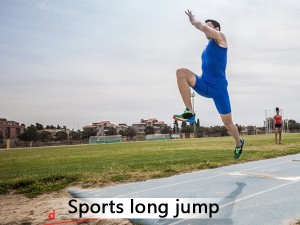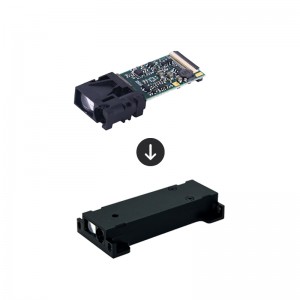Sports Long Jump Laser Length Measurement Sensor
Sports long jump events have traditionally used manual measurement methods to determine the distance of a jump. However, with advancements in technology, laser length measurement sensors are being increasingly adopted for more accurate and efficient measurements. Here’s an overview of distance measurement sensor:
How Laser Measurement Sensors Work
1. Laser Emission: The distance measurement sensor emits a laser beam that is directed towards the landing area of the long jump pit.
2. Reflection and Detection: The laser beam reflects off the point where the athlete lands and returns to the laser distance measurement sensor.
3. Time-of-Flight Calculation: The laser distance sensor calculates the time it takes for the laser to travel to the landing point and back. This time is then used to determine the distance.
4. Data Processing: The laser measurement sensor‘s internal processing unit converts the time-of-flight data into a distance measurement.
5. Display and Recording: The measured distance is displayed on a screen or recorded in a digital system for further analysis.
Benefits of Using Laser Length Measurement Sensors
1. Accuracy: Laser distance sensors provide highly accurate 1mm measurements, which is crucial for competitive sports.
2. Speed: The results are available almost instantly, reducing the time required for measurement and allowing for quick feedback to athletes and officials.
3. Consistency: Unlike manual measurements, which can be subject to human error, laser measurement sensors provide consistent and reliable results.
4. Automation: The process is automated, reducing the need for multiple officials and minimizing the risk of errors.
5. Data Management: Results can be easily recorded and stored digitally, making it easier to manage and analyze performance data over time.
Considerations
1. Cost: High quality laser measurement systems can be expensive, which may be a barrier for some organizations.
2. Environmental Factors: Outdoor conditions such as sunlight, wind, and temperature can affect the accuracy of laser measurement sensors. Some systems are designed to mitigate these effects.
3. Calibration: Regular calibration and maintenance are necessary to ensure the accuracy and reliability of the distance measurement sensor.
Implementation
To implement a laser length measurement system for long jump, you would typically need to:
1. Select the Right Laser Measurement Sensor: Choose a length measurement sensor that is specifically designed for sports applications and meets the required accuracy and durability standards.
2. Installation: Install the distance measurement sensor at the appropriate location, usually at the end of the long jump pit, ensuring it has a clear line of sight to the landing area.
3. Integration: Integrate the laser distance sensor with a display system and any other necessary equipment, such as a computer or tablet for recording and analyzing data.
4. Training: Train officials and staff on how to use and maintain the system effectively.
By adopting laser length measurement sensors, sports organizations can enhance the precision and efficiency of long jump events, providing a better experience for athletes, officials, and spectators.
Post time: May-27-2025







